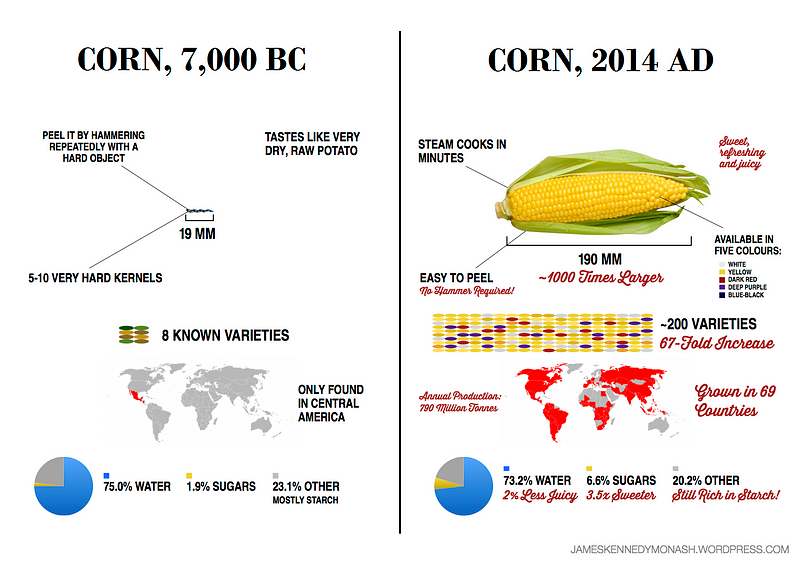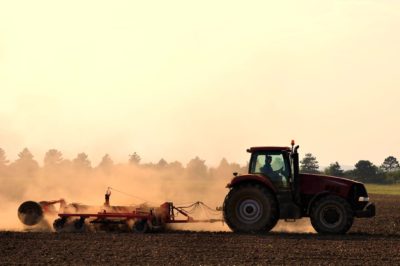*See disclosure at end
What if Thanksgiving were a holiday like President’s Day, with no traditional meal? It’s hard to imagine, because let’s face it — Thanksgiving is pretty much defined by the food. Not that there’s anything wrong with that! If we have anything to be thankful for, plentiful and nutritious food should be way up there. Turkey, sweet potatoes, corn, green bean casserole, cranberry sauce, pumpkin pie… the Thanksgiving meal as we know it wouldn’t be possible without the advances of modern agriculture and GMOs.
Turkey, the star of the holiday feast, wouldn’t make it to the table without the 75–80 pounds of feed needed to raise a 30-pound conventional (non-organic) tom turkey. Their feed is made of corn and soybean meal, from GMO corn and soy. And the sugar you might use in a sweet potato casserole, cranberry sauce, or pumpkin pie? Most likely GMO, at least if it’s derived from sugar beets.
Even your sweet potatoes are genetically modified, although humans had nothing to do with it. In 2015, scientists discovered that the sweet potato genome contains foreign DNA sequences from a type of bacteria. The DNA was present in all 291 tested varieties and even in some related wild species, so it seems that this happened in the wild, thousands of years ago. Although farmers didn’t know they had a “natural” GMO crop, they may have specially chosen to continue cultivating those potatoes because of a positive characteristic they had compared to potatoes that didn’t have the foreign DNA.
Selective breeding like that is genetic modification at its most basic level. Two parents (plants or animals) with desirable traits are bred together to create offspring that will likely have those same traits. Over time, this can lead to major changes. Take the golden corn on your Thanksgiving table, for example — it would have looked and tasted way different in 7,000 BC. A “cob” would have been about an inch long, with 5–10 hard kernels that tasted like raw potato. But early farmers started saving and planting seeds from plants that were larger and/or tasted better, which ultimately led to a radical transformation of the primitive foodstuff into a highly versatile and useful staple grown all over the world.

Adapted from the original image at JamesKennedyMonash.wordpress.com
Modern GMOs are really just a continuation of the agricultural advances humans have made over thousands of years. Now we have the technology to choose specific genes to target and make changes within plants, then test the results. Here are some of the ways GMOs help farmers grow a more abundant food supply:
· Pest resistance: GMO crops that withstand insect damage need fewer pesticides and produce more food.
· Disease resistance: A sick plant won’t yield high quality food. Scientists can create plants with genetically-engineered resistance to diseases caused by viruses, fungi, and bacteria.
· Herbicide tolerance: Weeds are a real problem because they compete with crop plants for nutrients, space, and sunlight. Herbicide sprays (weed killers) can control weeds, but also kill the crop plant. GMO crops can be resistant to the herbicide spray so that the spray kills the weeds, but not the plant. This frees up resources for the crop plant so they can grow larger and produce more food that is of higher quality.
· Drought tolerance/salinity tolerance: Farmland with rich soil is limited, but GMO plants can be bred to survive in places where it’s too dry or there’s too much salt in the soil. This will help us grow more food in more places.
It can be easy to forget where your Thanksgiving meal came from before the grocery store and even before modern farming. Thanks to genetic modification of crops — whether accomplished through selective breeding, opportunistic bacteria, or scientists in a lab — we have an abundance of food choices that can be sold at more affordable prices, not just during the holiday season, but all year long. And that, my friends, is really something to be thankful for.
Note: This post was originally published on the GMO Answers page on Medium, 11/19/18.
Disclosure: I consult for Bayer Crop Science as part of their L.E.A.D. (Leaders Engaged in Advancing the Dialogue) Network. L.E.A.D. is comprised of leaders in the food and nutrition space who communicate with consumers and other food and nutrition professionals about how food is grown.

